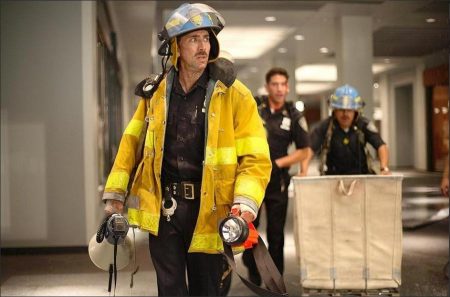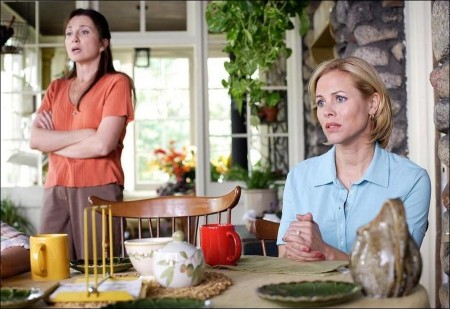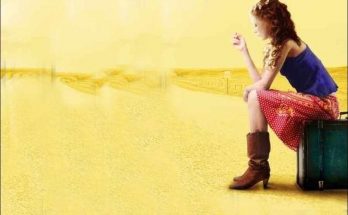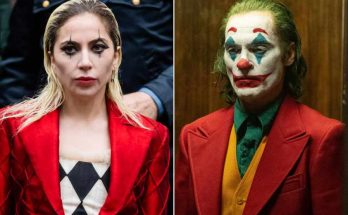To bring McLoughlin’s and Jimeno’s story to the screen, Oliver Stone brought together an outstanding team of professionals. The director of photography is Seamus McGarvey, who filmed the Academy Award nominee for best picture, “The Hours.” Jan Roelfs, the production designer, is a two-time Academy Award nominee and previously worked with Stone on the epic “Alexander.” Editor David Brenner, who won the Oscar for his work on Stone’s “Born on the Fourth of July,” marks his eighth collaboration with the director, joining with his longtime assistant and now fine lead editor in her own right, Julie Monroe. The costumes are designed by Michael Dennison. Composer Craig Armstrong, who has provided the music for such diverse films as “Moulin Rouge” and “Ray,” writes the score.
Although several of Stone’s movies feature operatic camerawork, “World Trade Center,” by comparison, is visually spare. “Seamus and I agreed early on to go more conservatively on this movie, to keep the moves simple, especially in the holes where the men are buried,” says Stone. “And to concentrate on the lighting. We wanted to keep the balance of realistic shadows, yet see into their eyes. Outside the holes, we sought the light as much as possible in the story of the wives and the Marine, to alleviate the dark. In the end, we played off the light and the dark, with variations, seeking to reverse the normal functions of both.”
With that in mind, McGarvey and Stone designed the camera work to convey the characters’ internal emotional journeys. “Oliver’s way of considering the lens is amazing. He is very, very precise with what the camera says and what the camera movement means,” says McGarvey. “He is never flagrant with the moves and he always captures great performances. Although we used a more naturalistic mode, there was a vibration throughout that is the director’s voice, the voice of an auteur and it created a unique quality. As in all his films, Oliver has identified with the protagonists and their dilemmas, their pain and their hope.”
To achieve that vision, McGarvey embarked on a testing process on the best ways to pick up emotion through shifts in light and focus. “On every film, you find something that offers a way of expressing emotion photographically. I asked Panavision, I'm trying to focus in on a single plane, on an eye or a mouth, trying to explore the landscape of the face without a camera move. Have you anything like that? They told me,We’ve got the perfect thing.’”
The perfect thing turned out to be a prototype of a lens invented by Steve Hylen, the designer at Panavision, which allowed McGarvey to control and train the lens on certain points of the face as the emotion of the scene dictated. “We used it sparingly, at fairly critical junctures, where we were on the protagonists’ faces and as we close in on an eye or a mouth, we can redirect the audience’s attention. It was incredibly subtle when we’re signaling a memory,” McGarvey says.
“I find that most scripts have a photographic heart and this one certainly had a very strong visual identity,” McGarvey concludes. “It’s spare, not highly stylized. Also, there are parts of the story that have a very subjective quality, in that you see it from the characters’ perspectives. Increasingly, as the story progresses, it becomes more transcendent. We devised ways of expressing that visually.”
The construction department began resurrecting the World Trade Center while the shooting crew filmed in New York, in order to have it ready by the time Stone returned to California. Devising the set was a challenge for production designer Jan Roelfs because the collapsed towers were very well documented in photographs and on television. While this offered a plethora of research material, it meant that everyone in the world had seen and remembered the original and no mistakes could be made. Moreover, Roelfs had to configure a construction that could accommodate the needs of the camera and lighting crews, as well as the creative requirements of Oliver Stone.
“I knew what Ground Zero looked like, but how to make it into a set that was shootable and affordable? That was one of the biggest challenges,” Roelfs says. “There was so much documentation of the Ground Zero site so that was very helpful, but, it spanned over 16 acres and that was too massive to build to scale. We started with models. As the set began to take shape, it was clear that there were certain iconic pieces that we would use as landmarks, stark pieces of the buildings that remained standing that were in many of the photographs. Then we had to build it and make it camera ready but also safe.”
Roelfs and his team constructed the set at the former home of Hughes Aircraft in Playa Vista. They began with Styrofoam reinforced with a urethane coating to make it strong but supple. Then, the art department was able to augment the Styrofoam beams with pieces of twisted metal procured from area scrap metal dealers. By the end of construction, the set contained 200 tons of scrap metal and 900 individual sculpted pieces and spanned about an acre, 1/16th of the original rubble field.
One of Roelfs’s ingenious moves was driven by necessity: because Stone’s artistic vision demanded that the set be lit and shot from below and above, the massive set could not be built on the ground; it had to be perched on some structure. Instead of building an elaborate base, he decided to rent a large quantity of shipping containers and built the set on top of them. “Because we were in Playa Vista, we had easy access to the port of Long Beach, which is the biggest container harbor in America,” Roelfs recalls.
The combination of containers, wood and steel struts, and platforms not only provided a level, sturdy plane for a giant crane, dolly tracks and other assorted camera necessities, it also created a labyrinth of tunnels and walkways beneath the shooting area. This offered shortcuts across the set and places to stow gear and, importantly, it enabled Chief Lighting Technician Randy J. Woodside to light it.
“We shot much of Ground Zero at night, because that’s when Will was rescued. That first night, after the Towers collapsed, there wasn’t much light; the site was mostly lit from the ground and some emergency equipment. We had to light a movie set, but essentially, it was the same concept: the set was lit from low angles and we had one large backlight from behind to provide shards of light,” Woodside says.
Woodside, like all the cast and crew, says that when he first saw the sets, “I was at a loss – they really impacted me emotionally, more than I expected, more than any other movie I’ve ever done. It was hard to direct my crew where to go on the set – we just had north, south, east, and west as reference points. I can only imagine what the rescuers when through when they were combing the real place, looking for survivors.”
When designing this set, Roelfs queried McLoughlin, Jimeno, Strauss and McGee, but because they saw this hole from different vantagepoints, they all had slightly different recollections of how it looked and felt.
“Listening to all the rescue workers stories, we got a pretty good idea of it spatially. The problem was that they took shifts and changed positions every twenty minutes, so nobody had a clear picture,” says Roelfs. “Between them all, and talking to Will and John, we pieced together the way they were positioned.”
Roelfs notes that he took his cues in the structure and design of the set from the way McLoughlin and Jimeno were positioned in the collapse. “When John realized the tower was collapsing, he ordered his guys to make a run for the service elevator – he thought that was the strongest spot,” says Roelfs. “He was miraculously correct; it stayed intact. After the tower came down, somehow John ended up lower and Dominick and Will ended up higher. So, we built that: a three-story elevator shaft set on wheels and a track, so that Oliver could position it and the camera as it suited him. The set had two floors, to show Dominick and Will above John. Pieces of debris hung in on a semi-circle track from the ceiling and we could lower or raise them.”
Roelfs’s Ground Zero and hole sets passed the ultimate litmus test: In January, Stone brought John McLoughlin, Will Jimeno, Scott Strauss, Paddy McGee, John Busching, Scott Fox, Tommy Asher, many of the cops and firemen who helped rescue McLoughlin and Jimeno and all of their families to Los Angeles for four to six weeks. They served as technical advisors and, in some cases, recreated what they did on the pile and in the hole, playing themselves.
Roelfs’s sets were so realistic that it gave them pause. Upon arrival to Los Angeles, McLoughlin, Jimeno, Strauss, McGee and Asher came directly to the Ground Zero set, on the first night the crew filmed there. In all, over 50 real-life PAPD, NYPD, and FDNY members who were at Ground Zero came to Los Angeles to appear in the film. In the end, all the prominent police and fireman extras in the film would be played by these real-life heroes.
Related Link: Read the Full Production Notes for World Trade Center Movie
Views: 437




